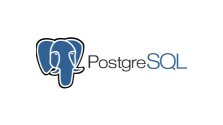- First, you need to register in ApiX-Drive
- Choose what data to transfer from Google Ads to PostgreSQL
- Turn on auto-update
- Now the data will be automatically transferred from Google Ads to PostgreSQL
Integration Google Ads + PostgreSQL


Create integration of Google Ads and PostgreSQL yourself, without programmers
Other available integrations
trial access
Automation capabilities of
Google Ads and PostgreSQL
Transmit data at specified intervals from Google Ads to PostgreSQL.

- Get ACCOUNTS (new)
- Get GROUPS (new)
- Get CAMPAIGN (new)
- Get KEYWORDS (new)
- Get negative KEYWORDS from the groups (new)
- Get negative KEYWORDS of the general list (new)
- Get account STATISTICS (by period)
- Get account STATISTICS (linear forecast)
- Get account STATISTICS (by days)
- Get groups STATISTICS (by period)
- Get groups STATISTICS (by days)
- Get campaign STATISTICS (by period)
- Get campaign STATISTICS (linear forecast)
- Get campaign STATISTICS (by days)
- Get ads STATISTICS (by days)
- Add ROW
F.A.Q. on integration of Google Ads and PostgreSQL
How is integration of Google Ads and PostgreSQL carried out?
How long does the integration take?
How much does it cost to integrate Google Ads with PostgreSQL?
How many integrations are available in Apix-Drive?
Google Ads offers business users a solution to serve ads online. These ads can be text, image, or video ads. The advertiser sets in the settings the main indicators for their advertisements, including setting up targeting and specifying the budget for the advertising campaign, as well as the cost per click. An important step in setting up an ad is keywords. It is they who will determine in response to which user request the ad will be shown. More
The PostgreSQL database management system offers users quite extensive functionality. For example, functions in it are displayed as blocks of code with server execution. Another element of the system's functionality is triggers, presented as functions called by DML operations. The interface of this DBMS supports several types of indexes (GIN, GiST, Bloom, BRIN, hash and B-tree), in addition, users have the ability to create and add new types themselves. PostgreSQL has multiple versions available; the system also supports more than two dozen data types and the addition of a number of custom objects. More
that we don’t have?
with your service on this page